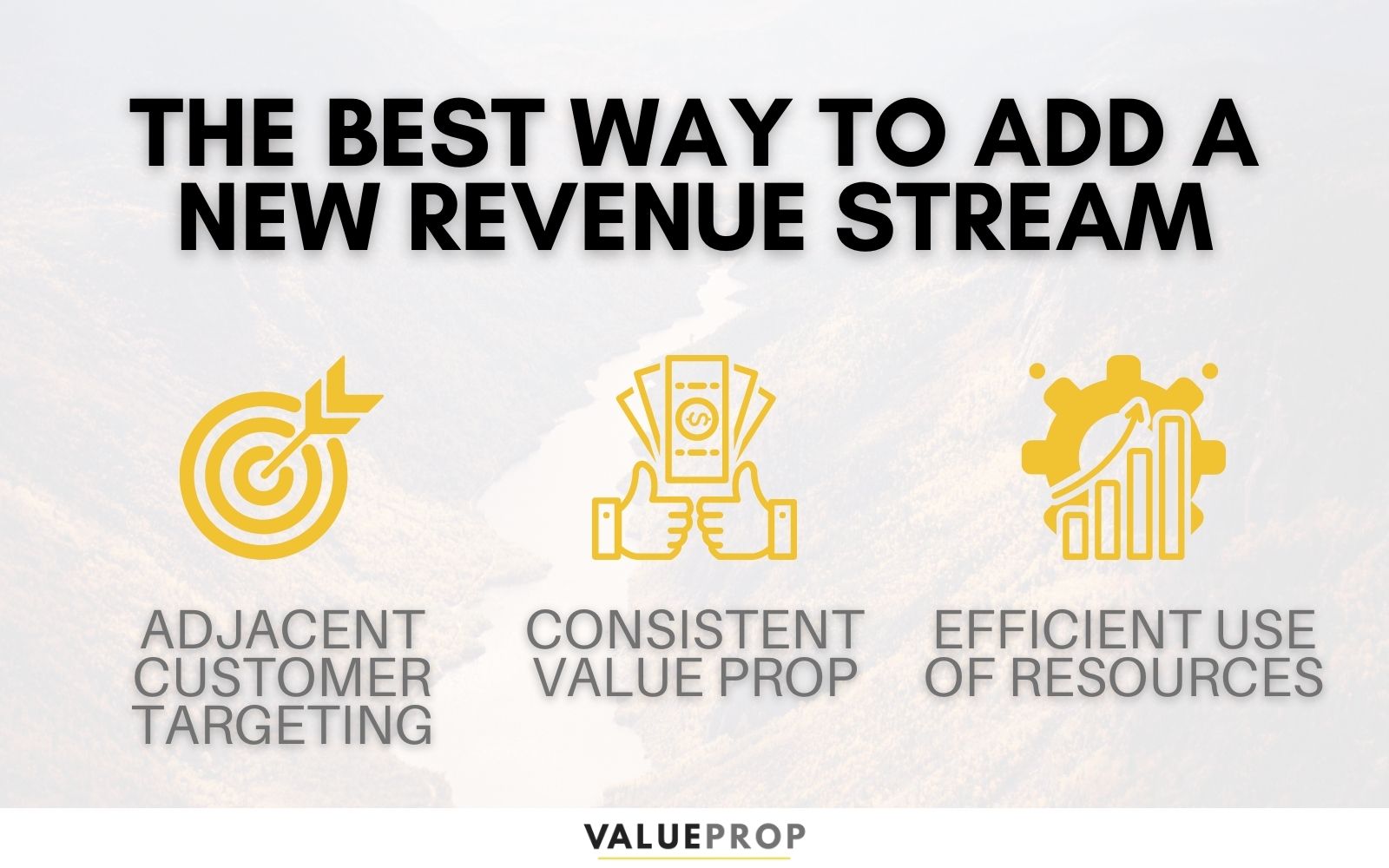How to Add a New Revenue Stream in 3 Easy Steps
Nov 25, 2020
Every business owner stuck in a revenue plateau wonders what it will take to break through to the next level. Revenue growth can be a challenge for any business, but there comes a point where new growth feels like a never-ending uphill battle. If that's you, then it's time to work smarter, not harder. And how do the most successful businesses do that? By adding a new revenue stream.
But before you roll your eyes and tell me that's too much work/not feasible for your business/just darn impossible...keep reading. Today, we’ll discuss how you can leverage this approach to grow your business in three easy-to-wrap-your-mind-around steps.
Adding Revenue Streams to Accelerate Revenue Growth
There’s a difference between sustaining and accelerating your business growth. I think it’s safe to say that most of the business owners I talk to are implementing strategies to sustain their growth. But few are really looking “big picture” and employing strategies to help their business break through to new heights. After all, it can be difficult to get out of the weeds when operating your business—to step back and have a clear line of sight regarding your trajectory.
Substantial business growth—trajectory-altering business growth—requires a higher view of your business.
It requires more than fine-tuning what you’re already doing. It requires expanding your business beyond your current operations.
Now, understandably, most business owners love the idea of expansion and revenue growth, but the thought of adding new revenue streams sounds complex and time-consuming. I can hardly think of more than a handful of business owners I’ve met that felt they had plenty of extra time to launch a new project.

So what we’ll explore today is not just why you should look at adding revenue streams—but the steps you need to take to make your ideas a reality.
Let Us Help You Expand Your Revenue Generation
Step 1: Prospecting for a New Revenue Stream
The success or failure of a new revenue stream rests primarily on its planning, long before it ever reaches execution. There are three essential dimensions that you need to carefully consider when planning a new revenue stream in order for it to be effective. If you miss these elements, a new revenue stream can quickly turn into a drain rather than a stream.
So consider these next questions to be the "guard rails" to help you avoid that.
Does it meet an “adjacent” need for your current customer base?
Sometimes when people hear the phrase “new revenue streams”, they picture expanding into new customer bases. While that’s always a possibility, I find that the most efficient, effective new revenue streams are found within your existing customer base. Sure, you may attract new customers through your new offer, but it should be designed to resell to your existing customers primarily. In a simple question: “What else can I sell this customer?”

Retargeting your current customers with a new offer is one of the fastest ways to grow your revenue for a few reasons.
- You’ve already built up brand familiarity and reputation capital.
- They already have a baseline experience that demonstrates the kind of value they can expect from you.
- Providing them with a new, valuable offer allows you to accrue new revenue with a shortened sale cycle from the existing relationship.
Is it consistent with your current value proposition?
As businesses grow, it can become harder and harder to protect a specific, clear value proposition. Adding new revenue streams can contribute to this challenge, if not carefully planned. When you are considering a new stream, evaluate whether or not this offer fits within the value prop you want to make clear to your customers. Does it add to and enhance the value they expect from you? Or does it detract from their clarity regarding your offers?
Let’s use a car dealership for example. How come so many dealerships also have repair shops incorporated into their locations? Why not only sell cars? This answer may feel obvious, but a person who buys a car will clearly need maintenance at some point. Adding maintenance is not only a financial opportunity for a dealership, but its presence also emphasizes their ability to preserve the value of the initial product you purchase from them. It's a financial opportunity for the dealership, delivered in a way that compliments the primary value they offer to their customers.

Is it compatible with your current business model and resources?
One way to make new revenue streams more accessible is to look for ways to use your existing business model and resources to deliver your new offering. If you can leverage existing resources and structure, you can maximize profit margins and minimize logistical strain across your business. Boiled down, the question is, “How can we use what we have to deliver something new?”
This also helps with risk management as it reduces the distraction from your current primary model and revenue streams. You may find a revenue stream can quickly become a serious stumbling block if it hinders your primary operations. Don’t defeat your goal of adding revenue by detracting from your current base and business model.

Case Study: Soundstripe Expands into New Revenue Stream
I saw a great example of this in the recent expansion by Soundstripe, a company that offers a subscription-based stock music subscription service. Members pay a monthly fee to have access to their entire library of licensed music, primarily used in video content creation. And recently, they launched into the stock video market as well.
Why does this work so well for them? They hit every item on our list of perks.
Adjacent Customer Targeting: The large majority of users use their audio library for video marketing, making stock video an excellent adjacent value to offer.
Consistent Value Prop: Their key value prop lies in their subscription model for stock audio - one monthly rate with unlimited downloads. Most stock video platforms are pay per clip, giving them the opportunity to bring their unique value prop to the stock video world.
Efficient Use of Resources: The most expensive part of their business model is the software to store, categorize, and deliver the files. In expanding to video, they are able to use the exact same software developed for users to search their audio libraries.
Step 2: Testing Your Revenue Stream Concept
Once you have an idea of what new revenue stream you can develop, it’s time to start socializing and testing your idea. This is a critical step before you go all in on this new offering. Here’s how to do it.
Talk to your best customers: Whether it’s an at-scale survey or a more in-depth approach like interviews, find out what your best customers need and determine how you can meet that need within your potential new revenue stream.
Talk to your employees: Conversations with your employees are valuable for two reasons. First, many of them have conversations with your clients and have likely gleaned some valuable insight in those interactions. Second, they will be responsible for sustaining the increased load of a new revenue stream. Getting their buy-in is an important part of your new revenue stream succeeding.
Research your competitors: Who is already offering the service or good you are considering adding? How are they structured? Are there any specific advantages you could leverage by incorporating it with your current business model? Don’t just be another vendor in your space - differentiate yourself with your integrated value prop.

Step 3: Mobilizing Your Go-to-Market Resources
If you want to add new revenue streams to scale your business faster, having someone who knows how to assess and implement your new offering can prove invaluable. This is especially true if you are heavily involved in your company’s day-to-day operations; you’ll want someone who can support your business through bringing your new offering to market and making it fit within your current business model.
At Value Prop, adding new revenue streams is one of the ways we help business owners achieve “business growth on purpose”. Our Revenue Throughput Program gives you the tools and guidance you need to expand the volume and velocity that your business converts opportunities into profitable revenue streams.
To get a better idea of how we jumpstart your business’s growth, check out the Revenue Throughput Program.


